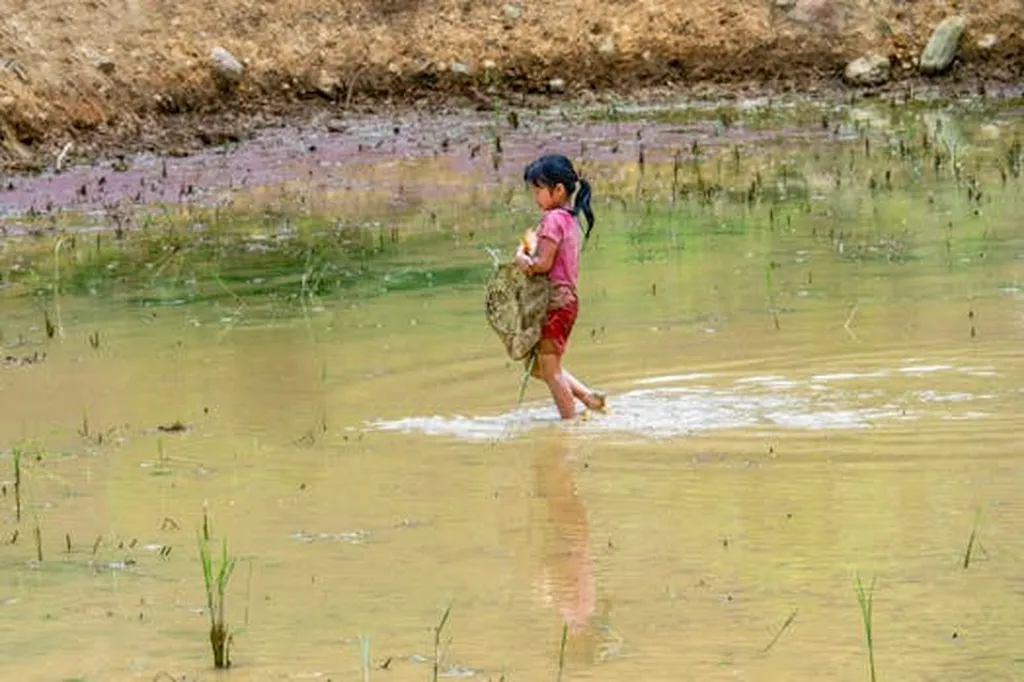In the quest to advance precision agriculture and effective land management, researchers have developed a novel deep learning framework that promises to revolutionize the way agricultural fields are delineated from high-resolution satellite imagery. The RBSF-Net, or Refined Boundary-Semantic Fusion Network, is a significant leap forward in the accurate extraction of individual agricultural fields (AFs), addressing long-standing challenges such as field adhesion, inaccurate boundary localization, and limited transferability.
The RBSF-Net framework, detailed in a recent study published in the IEEE Journal of Selected Topics in Applied Earth Observations and Remote Sensing, integrates precisely located shallow boundary features with deep semantic features. This integration allows for the extraction of fine-scale AFs with remarkable accuracy. The study’s lead author, Mengyu Liu from the College of Geography and Environment at Shandong Normal University in Jinan, China, explains, “Our approach combines the strengths of both boundary and semantic features, resulting in a more comprehensive and accurate delineation of agricultural fields.”
The dual-branch hybrid neural network captures the boundary and semantic features of AFs, while a boundary patch refinement module postprocesses fragmented boundaries using directional information. The boundary-semantic interaction module then employs a marker-controlled watershed fusion strategy to integrate these features effectively. This process generates the final individual AF entities, using deep semantic features as markers and shallow boundary features as guide maps.
The RBSF-Net has demonstrated significant improvements over current state-of-the-art methods, achieving an accuracy of $F{{1}_{\text{extent}}}$ at 0.880, $F{{1}_{\text{edge}}}$ at 0.919, and ${{S}_{\text{total}}}$ at 0.169. These metrics highlight the framework’s superior performance in accurately delineating agricultural fields. Moreover, the RBSF-Net has shown great generalization and robustness, performing well across three diverse regions with different imagery resolutions, agricultural landscapes, and terrain conditions.
The commercial impacts of this research are substantial. Accurate delineation of agricultural fields is crucial for precision agriculture, enabling farmers to optimize resource use, improve crop yields, and enhance sustainability. By providing a more precise and reliable method for identifying AFs, the RBSF-Net can support better decision-making in agricultural planning, monitoring, and management. This technology can also aid in effective land management, helping governments and organizations to monitor land use, enforce regulations, and plan for future agricultural development.
The RBSF-Net’s ability to generalize across different regions and conditions makes it a versatile tool for global application. As Mengyu Liu notes, “The robustness and accuracy of RBSF-Net make it a valuable asset for large-scale AFs identification, supporting precision agriculture and effective land management on a global scale.”
This research not only addresses current challenges in agricultural field delineation but also paves the way for future developments in the field. The integration of boundary and semantic features offers a new paradigm for remote sensing and deep learning applications, potentially inspiring further innovations in agricultural technology. As the agriculture sector continues to evolve, the RBSF-Net framework could play a pivotal role in shaping the future of precision agriculture and sustainable land management.
In summary, the RBSF-Net represents a significant advancement in the accurate delineation of agricultural fields from high-resolution satellite imagery. Its superior performance, generalization, and robustness make it a promising tool for supporting precision agriculture and effective land management, with far-reaching commercial and environmental benefits.

